Affiliate disclosure: This post may contain affiliate links. Please see our Privacy Policy.
There’s a big difference between growing sunflowers, and growing edible sunflower seeds. Most sunflowers you plant in the garden these days have been developed to produce stunning, long-lasting flowers…but not much in the way of seeds.
Gardeners that want to harvest sunflower seeds need to be careful when selecting varieties, and you’ll need to beat the birds to your harvest.
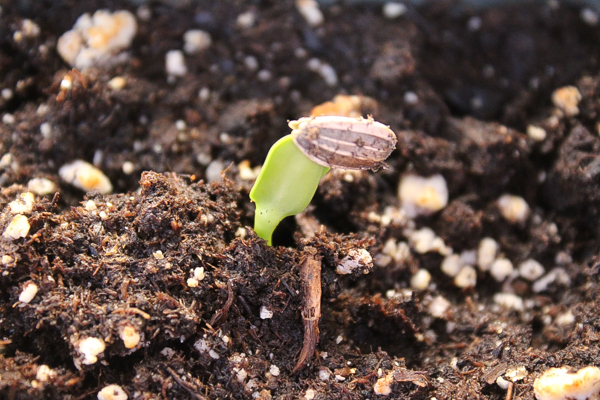
Growing Sunflowers from Seed
Generally, sunflower seeds are started directly in the garden. Sunflower seedlings can take a bit of frost, and it’s safe to plant them outdoors about 2 weeks before the last expected frost date.
This can be handy if you have a short growing season like we do here in Vermont. To germinate, sunflower seeds need soil temperatures of at least 55 degrees F, which is much colder than tender plants like tomatoes.
Sunflower seeds can also be started indoors, which is helpful for long-season varieties. Some varieties of sunflower take 120 days to mature, which just won’t work in our 100-day growing season. To extend the season, start sunflowers indoors about 3-4 weeks early, and be sure to harden them off by taking them outside during the day in a week or two before planting.
Sunflowers grow taproots, and they can become stunted if they’re started indoors too early. Be very careful in handling the seedling if you start them indoors.
Damaging the taproot means that your sunflower may never thrive. For best results, start them directly in the garden.
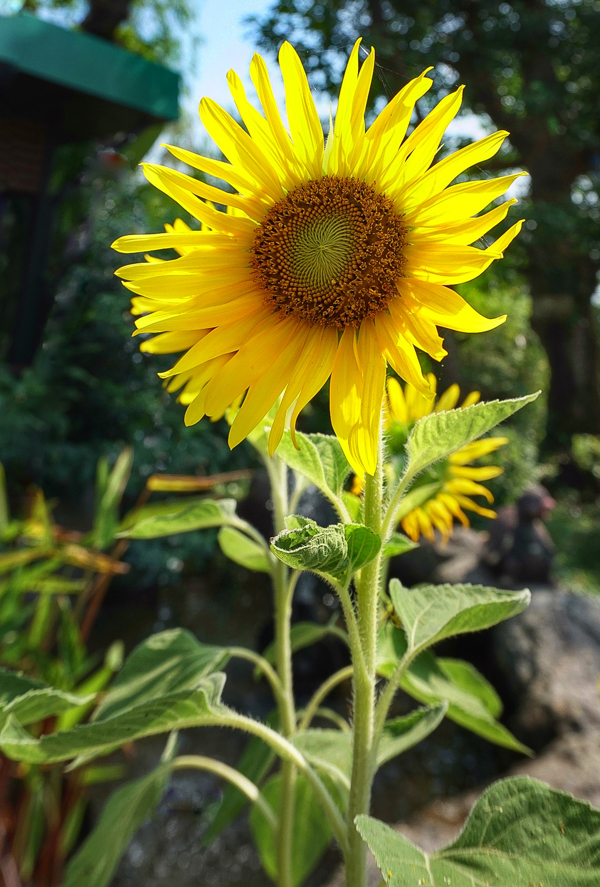
Growing Sunflower Plants
After successful germination, thin sunflower plants to at least a foot apart to give them room to thrive. Giant sunflower varieties, like you’ll find competing at your local fair, can reach 16 feet tall with the right conditions. At the Tunbridge Worlds Fair, I’ve seen 14-foot sunflower plants grown by kids here in Vermont, so you can grow them big even with a short growing season.
Sunflowers are relatively forgiving, and they are heat and drought tolerant. The one thing they can’t take is waterlogged soils, so be sure you have good drainage. Ideally, they want 6-8 hours of direct sunlight a day, and they love heat.
The soil for growing sunflowers isn’t too particular, but it needs to be deep. They send down long taproots, so the soil should be loose at least 2 feet down. We have shallow soils, only about a foot deep in places, so we grow them in raised beds to give them a bit more growing space.
Sunflowers are also a bit sensitive to wind. With a tall-growing stalk, high winds can break them and destroy their seed head. The stalk is resilient, but it can only take so much.
If you live in a windy area, try growing them against a south-facing wall or fence for protection.
As far as pests go, birds, squirrels and deer are the biggest problems. Be sure they’re in a fenced area if you want to keep the animals away from them, or plant plenty, and feed the animals and yourself.
Sunflowers are resistant to most diseases, but they’ll occasionally get worms in the blossoms. If you see any, just pick them out by hand.
Sunflower Varieties with Edible Seeds
These days, most sunflower varieties have been hybridized to produce showy flowers rather than seeds. There are even some pollen-free sunflower varieties that are hybridized for use in wedding cut flowers so no one has an allergy attack.
That’s nice and all, but I think the seed-producing varieties of sunflowers are beautiful and they also produce tasty seeds.
What kinds of sunflowers are best for eating?
- Mammoth Grey Stripe – (Heirloom) Grows about 12 feet tall and produces seed heads up to 20 inches across. This is the most common backyard variety. (Seeds Here)
- Mammoth Russian – (Heirloom) 12 to 15 feet tall with thin-shelled seeds. (Seeds Here)
- Titan – (heirloom) I can’t find any reference to exactly how tall this one gets, but it’s famous for particularly large flowers that grow up to 2 feet across. (Seeds Here)
- Hopi Black Dye – (heirloom) an old heirloom. It has edible seeds, and the seed shells were used as a black dye by the Hopi Indians. The center of these sunflowers is particularly striking due to the very dark seeds. (Seeds Here)
- Paul Bunyan – (Hybrid) Known for very tall plants. (Seeds Here)
- Sunzilla – (Hybrid) This hybrid is one of the tallest varieties available, growing 16 feet tall and producing seed heads up to 2 feet across. (Seeds Here)
Short Sunflowers with Edible Seeds
Most of the traditional varieties are tall. Really tall. For more practical backyard sunflower seed growing, new short hybrids have been developed.
- Royal – (Hybrid) 7 feet tall with impressive 8-inch flowers and high seed production.
- Super Snack – (Hybrid) This plant produces one large 10-inch flower on a 5-foot tall plant. The seeds are especially easy to crack. (Seeds Here)
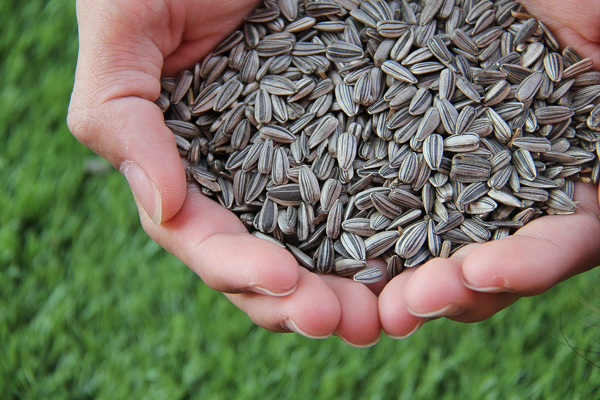
Harvesting Sunflower Seeds
Determining when sunflower seeds are ready for harvest can be tricky. Once the flower opens, it’ll be a long time before everything has been pollinated and seeds fully develop. The seeds are usually ready for harvest 30 to 45 days after the flower opens, but that depends a lot on the weather.
Sunflower seeds are ripe when the flower head turns from green to yellow and the seed head begins to brown. To test for ripeness, gently pry out a seed or two and give them a taste. If the sunflower seeds are ready for harvest, cut the flower stem a few inches below the seed head.
At this point, the seeds need to dry in a place where they’re protected from birds. Try wrapping the whole flower in a loose layer of cheesecloth and hanging it in a sheltered space with good airflow.
Alternately, you can just hang them indoors. Once the seed heads are dry after a few weeks, gently pry the seeds out with your fingers or a fork.
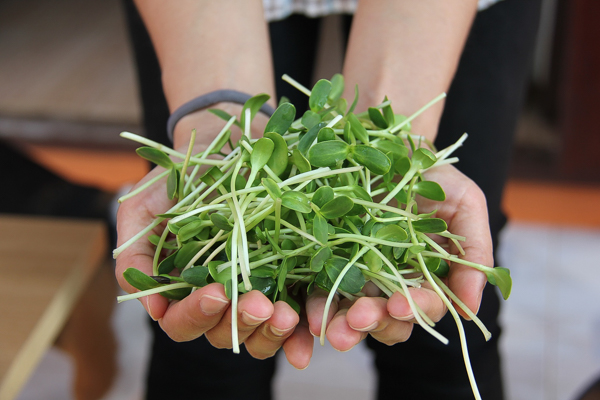
Growing Sunflower Sprouts
Beyond just seeds, sunflower sprouts are a tasty sandwich topper. Organic markets sell small bags of them, with about a cup of sprouts, for around $4.
They grow best in the soil, so start a handful of seeds in a small pot and then cut them off about 2 to 3 weeks later.
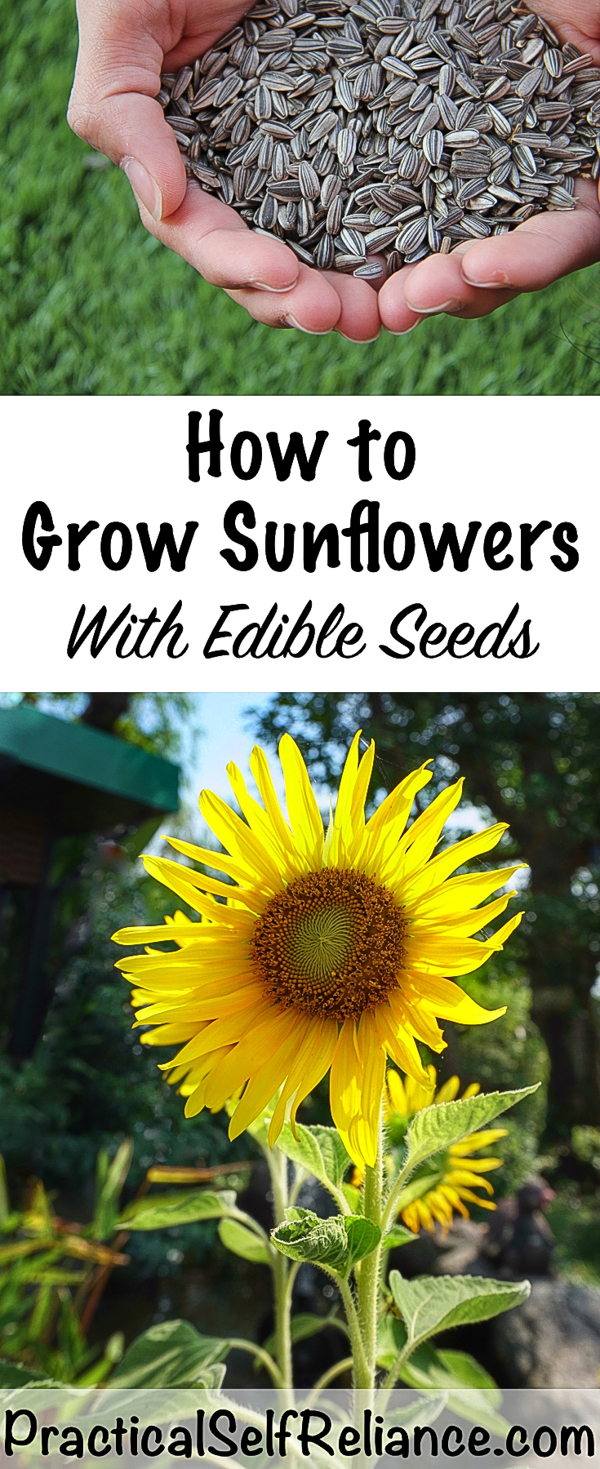
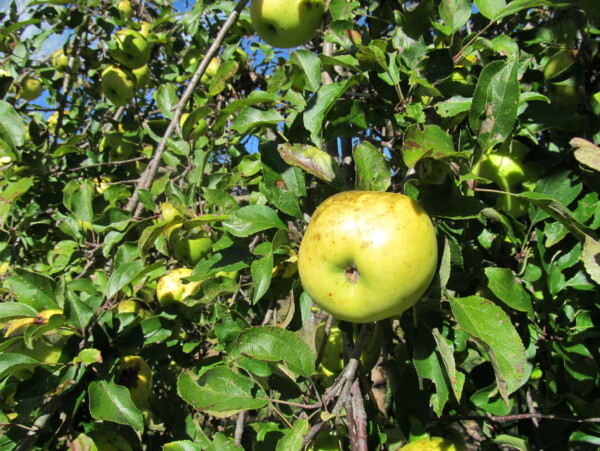



Hi! Can you tell m the process for roasting the harvested seeds for eating? Do they need to be shelled first? I’m having trouble finding instructions. My instincts tell me they should be shelled and roasted at a low temp (250° maybe?)., but not sure.
Here is a post I found for you that explains in detail how to shell and roast the seeds. https://www.culinaryhill.com/how-to-roast-sunflower-seeds/
Thank you!!
This post answered my exact questions!!
Great! I’m so glad it was helpful.
What sort of yields do you get per head?
The yield will depend on the variety.
I’m thinking of growing Giant Yellow, if you’re familiar with that variety?
I am not sure about that specific variety but I did do a little research and it looks like you can get anywhere from 1,000 to 2,000 seeds per flower.
My sunflowers (started inside in trays & pots) look almost like they are forming a teeny blossom. ?! they are about 8 inches tall, with 3 or 4 true leaf sets, and it looks really like there is a blossom forming already on them. Can this be?? Can I just pinch that off and have the flower stem still grow and produce??
I have heard of this happening before with fruit. I’m not sure what causes it. I would definitely try to pinch those blooms off and see what happens. That should promote new flower growth.
For hybrid sunflowers, is it possible to save and replant those seeds?
You can save seeds from hybrid plants but they generally will not have the same attributes as the plant that you saved them from. They also don’t typically tend to grow as well.
New sprouts cannot support themselves. Do they nee “mini stakes?
Interesting…maybe try planting the seeds deeper? I’ve honestly never had that problem, but I don’t think mini stakes will help as it’ll just prevent them from growing strong enough to support themselves later.
Do I hang the flower upside down or right side up to dry and collect the seeds?
Hang them upside down once they’re cut off and drying.
Can you grow sunflower sir seed from a bag o birdseed
Yes, you can. Actually, our birds “plant” dozens of sunflowers each year simply from dropped seed. It occurs to me that I should keep those aside and see if they taste any different, but I haven’t done that yet. It’s possible they’re a productive but less tasty (to humans) variety, but honestly, that seems unlikely to me since.
Best information on this topic I’ve found. Thank you!